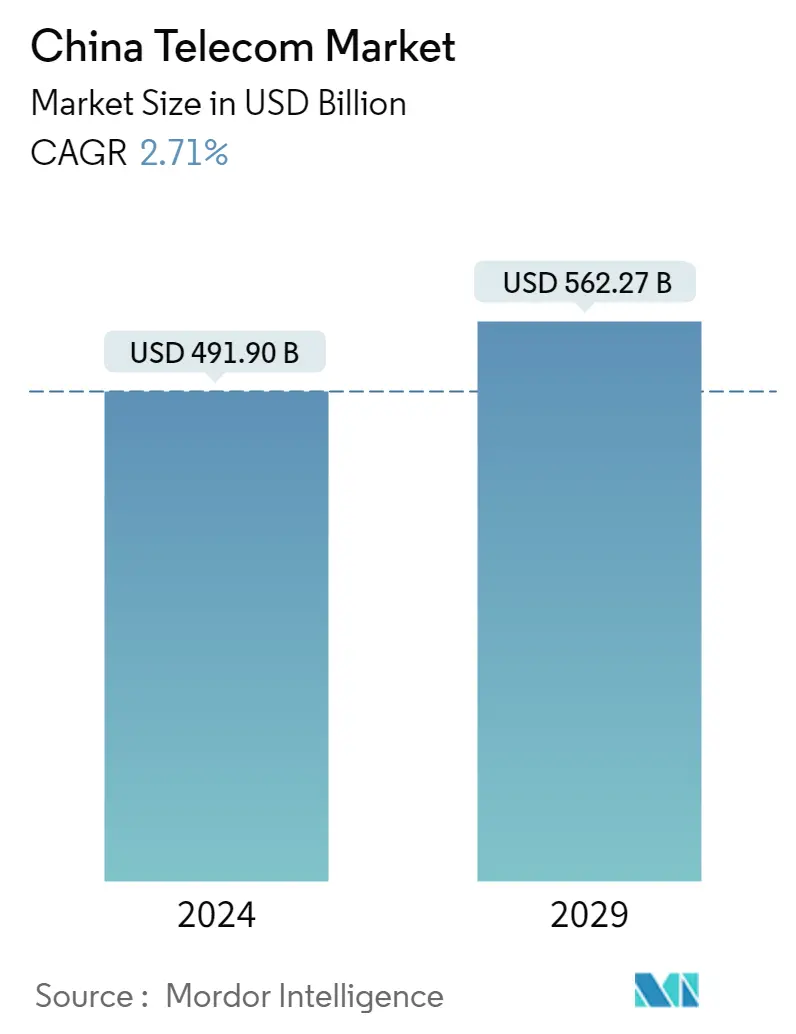China’s telecom industry business revenue at $218B or +6.9% YoY
China’s Ministry of Industry and Information Technology (MIIT) said that in the first eleven months of 2023, the telecommunication industry’s collective business revenue soared to 1.55 trillion yuan, approximately 218 billion U.S. dollars, marking a 6.9% year-on-year increase.
Emerging sectors such as big data, cloud computing, and the Internet of Things (IoT) have shown significant growth. China’s three state owned network providers, China Telecom, China Mobile, and China Unicom have leveraged these technologies to catalyze a 20.1 percent surge in revenue from these areas, amounting to 332.6 billion yuan.
Cloud computing and big data have experienced explosive growth. Revenue from cloud computing surging by 39.7 percent and big data by 43.3 percent compared to the previous year. These figures underscore the central role of data-driven technologies in powering China’s telecom industry forward.
Broadband internet services continue to be a strong revenue stream for the three telecom giants, generating 240.4 billion yuan from January to November, which is an 8.5 percent increase year on year. This growth reflects the increasing demand for high-speed internet across China, as the country continues to embrace digital transformation in all sectors.
In conclusion, China’s telecommunication industry’s growth narrative in 2023 is not just a story of numbers but a chronicle of technological evolution and its integration into the fabric of society. With emerging sectors leading the charge, the industry’s upward trajectory seems poised to continue, as these technologies become increasingly embedded in the everyday lives of businesses and consumers alike.
……………………………………………………………………………………………………………
Separately, Mordor Intelligence forecasts the China Telecom Market size is expected to grow from USD 478.92 billion in 2023 to USD 547.43 billion by 2028, at a CAGR of 2.71% during the forecast period (2023-2028).

References:
https://english.news.cn/20231223/36996f5176e24d48a5677ddc160c99a5/c.html
China’s Telecom Sector Soars with Big Data and Cloud Computing Growth
https://www.mordorintelligence.com/industry-reports/china-telecom-market
One thought on “China’s telecom industry business revenue at $218B or +6.9% YoY”
Comments are closed.



Huawei Technologies is launching a full offensive in the electric-vehicle market, forming tie-ups with smaller automakers to expand the network of customers that use its autonomous-driving technology.
The effort is paying off. The revamped Aito M7 plug-in hybrid by a joint venture by Huawei and midsize automaker Seres Group received 100,000 orders in two and a half months following its launch in September.
Leveraging its self-driving technology, Huawei also launched a jointly operated brand with state-owned Chery Automobile called Luxeed, which released its first electric sedan, the S7, in November.
The company is also supplying systems and parts for Changan Automobile’s Avatr electric-vehicle brand, which launched a new model in November. Huawei took another step to accelerate cooperation with automakers in November with an announcement to spin off its smart-car business into a new company. It aims to both strengthen relationships with partners and secure funding.
Changan has already signed a memorandum of understanding with Huawei, under which it and its affiliates will acquire up to a 40% stake in the new company. Seres and midsize automaker JAC Group said they are considering investing.
“In the short term, related annual car sales could reach around 1 million units,” China’s Ping An Securities said of the new company.
BYD is cementing its lead in the Chinese market for so-called new energy vehicles, with annual sales approaching 3 million units for 2023. But automakers using Huawei’s technology are gaining momentum and they could become a force surpassing second-ranked Tesla, which is expected to sell around 600,000 units this year.
Companies like Changan and Seres aim to use Huawei’s resources to quickly respond to the rapid electrification shift. Not only can they reduce research and development costs by relying on Huawei’s technologies, the automakers can also take advantage of Huawei’s brand recognition and sales network. With BYD becoming an unstoppable force, Huawei could be the tech powerhouse they can turn to.
Huawei is rushing to grow its car-related business after its smartphone business suffered a major blow from U.S. export controls imposed in 2019.
The company has invested a total of $3 billion in the automobile business in hopes of turning it into a major earnings driver.
But the business was in the red for the year ended December 2022, with its revenue of 2 billion yuan accounting for only about 0.3% of Huawei’s total.
Huawei’s precarious position under the U.S. restrictions could present another problem. Many Chinese automakers are working to expand sales in Europe, Asia and elsewhere. But working closely with Huawei could become a liability as they pursue their overseas ambitions.
At an industry event in April, the Huawei smart-car chief Richard Yu lamented that U.S. sanctions have made it difficult for American, European and Japanese companies to choose it as a major supplier. “So our partners are limited to Chinese carmakers,” he said frankly.
Huawei’s relationships with automakers have not always been smooth. Major state-owned manufacturer Guangzhou Automobile Group Co. announced in 2021 that it would jointly develop an EV brand with Huawei, but the project fell through.
“While we had a lot of demands to make our own unique product, Huawei was trying to develop a platform that many automakers could use,” GAC President Feng Xingya said in a November interview with media outlets including Nikkei.
https://asia.nikkei.com/Business/China-tech/Huawei-tech-drives-smaller-Chinese-players-challenge-to-BYD-Tesla